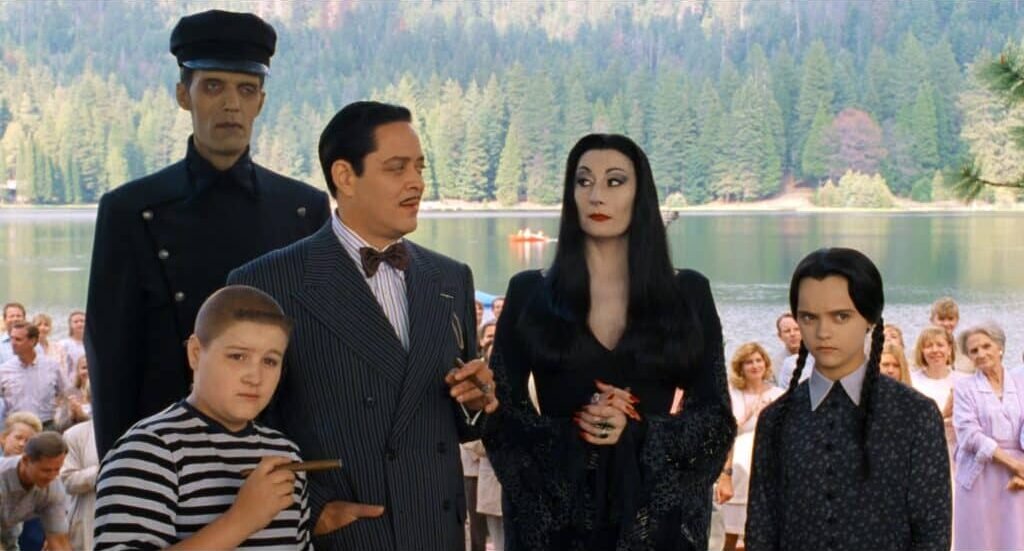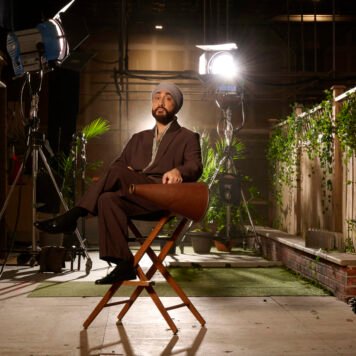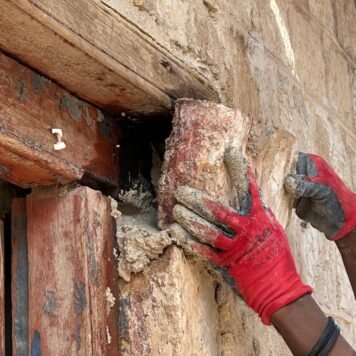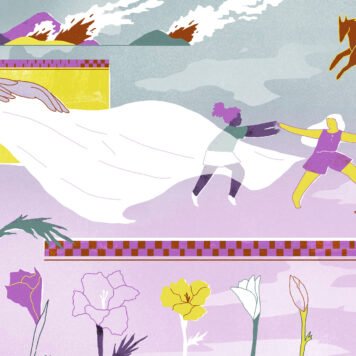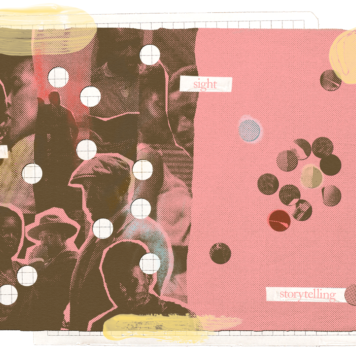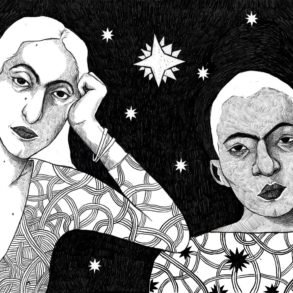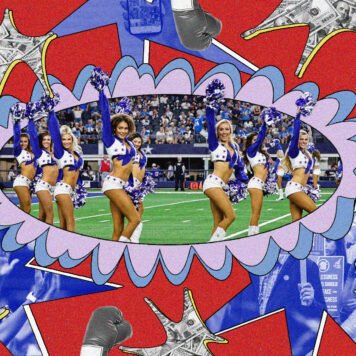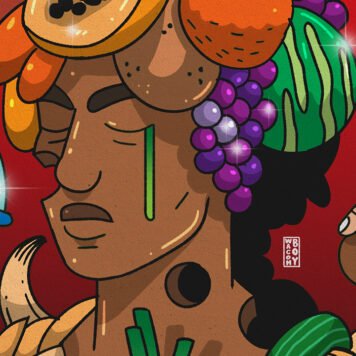One of my favourite memories of growing up in the ‘90s was going to the video shop in the heart of a rainy Cape Town winter to choose movies to watch. Some days, the selection process took longer than usual, especially if I was open to finding something new in a section I had not ventured into before.
At the time, VHS tapes were cutting edge technology, and our Panasonic player was my creative domain where I mostly watched movies recorded from the TV. My watching habits have always involved a ritual of repetition that has led me back to the same movies and series multiple times. Though this might seem like a waste of time, without realising it, this is one area where my muscle for the task of study was passively developed.
Watching the same movies multiple times, under different conditions, at different ages, through different circumstances sharpens a sense of sight through which the content evolves to take on various meanings. These meanings are born from an interplay between the viewer’s (hopefully) growing backpack of experiences, and the politics of the world the art is being consumed in. As my backpack of experiences has grown, like I did at the video shop, I have returned to one cinematic universe consistently: The Addams Family.
Representing the Other as bizarre
As a child, I was introduced to the Hollywood movies The Addams Family (1991) and Addams Family Values (1993), completely unaware that the films were revivals of a comic strip published in The New Yorker between 1938 and 1988, and a live-action television series which aired on ABC in 1964.
Though the characters, their backstories, and some relationship dynamics have changed, the main characters that make up the nuclear Addams Family have remained consistent. Through all the tweaks in characterisation and storyline, the point of being an Addams has always been to be an Other.
The Others that the Addams family represents include all people who fall outside of the white, male, heterosexual, Christian, able-bodied framework of what constitutes humanity. The way the family is perceived by normative society is, in fact, an allegory for how human diversity and the resistance to normativity is perceived through normative eyes.
This otherness has been depicted throughout the various cinematic universes through a spectrum of attributes within the domain of the strange. The more benign portrayals characterise the family as bizarre, macabre, sullen, idiotic and practitioners of the occult. This is packaged in a lack of awareness that they are, in fact, Other. More harmful elements in the various portrayals create the impression that the family is evil, cruel and sadistic. This characterisation of their strangeness tends to overwhelm the imagination of what The Addams Family, the characters in the story and strangeness, as a concept applied to people, represent.
Through my countless rewatches of the story across mediums, I have seen it differently, and on behalf of the Addams family, I would like to offer my own defense. When looking at what makes them bizarre to the “outside world”, the individual characters and their relationships to each other represent the heart of what it means to be not just non-normative, but anti-normative.
Gomez, the father, who is often incorrectly referred to as the patriarch of the family in written descriptions of his character, is hopelessly devoted to, and often submissive to his wife, Morticia, whom he worships. This devotion is extended to his family which includes his children, Wednesday and Pugsley, his brother, Fester and Morticia’s mother, Grandmama. Not related, but equally a part of the family is the mute butler, Lurch and a dismembered hand, Thing.
Gomez and Morticia are often shown to be completely unable to manage their unbridled attraction to each other, which regularly spills over into sexually inappropriate behaviour in public. Gomez makes no secret of how devoted he is to his wife, and is happy to be seen as inferior to her, which makes him seem idiotic at best and insane at worst. The epitome of what modern incel culture refers to as a beta male, he is condemned to his misfortune as a good husband and father. Perhaps, in the absence of the characteristics that make of him a man worthy of respect by the standards of patriarchy, Gomez must be rescued from his unconditional love for his family by being installed as a “patriarch” by the popular imagination which sees care and deference to a woman as queer deviance.
Pride as a device for resisting normativity
Morticia is a witch, descended from a long line of witches dating back to the 16th century witches of Salem. In the 1991 film adaptation, one of Wednesday’s teachers calls Morticia in, deeply concerned about Wednesday’s choice of hero to draw for a class assignment about admirable people. The bulletin board of drawings includes former US president George H. W. Bush, former First Lady Barbara Bush and television host Jane Pauley.
Morticia, in her signature tight, all black attire and mortuary white make up, asks, equally concerned if the teacher has contacted their parents, before being shown a drawing of Wednesday’s hero: Calpurnia Addams, her great aunt who was burnt at the stake in 1706. With pride, Morticia exclaims: “They say she danced naked in the town square and enslaved a minister.” The irony of the teacher’s horror at a witch being venerated above a war criminal president makes the point about how normative cultures encourage a warped sense of morality in which institutional power is worshipped as the purview of good and important people.
Despite the stares, gasps and scoffs, the family is proud of their otherness, not perceiving it as ghastly at all. Central to the storylines of the ‘90s film adaptations has been the villains trying to exploit what they consider the family’s stupidity to steal their immense fortune.
Normies and weirdos: Distorting the realities of societal harm
In the 1991 film, Tully, the Addams family accountant, hatches a plan to trick them out of their fortune in collaboration with a loan shark he is in debt to. He exploits their deep sorrow about Fester, who had been missing for 25 years, and orchestrates the return of an imposter who looks exactly like Fester. The story unfolds to reveal the imposter to be Fester with amnesia, who was found by the loan shark Abigail Craven and adopted as her son (for extra context).
The point about Fester, an ugly, socially inept, naïve and idiotic character, is that he is the eldest brother and is therefore the respected custodian of the family fortune. In his family, Fester is highly respected, while to the world he is a lowly weirdo – reflecting again the perceptual distortion prejudiced societal standards create. These are the same standards that stigmatise efforts aimed at transforming our society into a more just, humane one, and villainise its proponents as renegades and criminals.
This storyline is repeated in the 1993 film when Debbie Jellinsky, a gorgeous but psychopathic woman, poses as a nanny for their newborn mustachioed baby, Pubert, only to get close to Fester so she can marry him, kill him, as she has done with her parents and all her husbands, and steal the family’s money. In defense of Debbie, one of my favourite characters from the cinematic universe, though I do think she is rotten to the core, her characterisation as a Black Widow who kills her husbands for money is a misogynistic trope that her level of psychopathy did not need to drive home the point that she is bad to the bone. What both these adaptations communicate is that it is most often not the weirdos, but the normies who pose a danger to society, which brings me to Wednesday.
Resisting colonial distortions of US histories of genocide
In the 1993 film, Debbie hatches a plan to convince Morticia and Gomez to send the children to summer camp, to get a suspicious Wednesday out of the way. While there, a Thanksgiving-themed play, to be recited at the end of the camp, recreates the Native American and Pilgrim colonial encounter. The obvious favourite of the camp leaders, blue-eyed, blond-haired Amanda Buckman is cast as Sarah Miller, the “kindly Pilgrim lady” along with her “Pilgrim pals” which comprise of the other favourites.
Wednesday is cast as Pocahontas, alongside all the other camp outcasts, who make up the rest of the native community members. While having pretended to care about the play and its biased and racist script all along, on stage, Wednesday breaks character and says to the pilgrims after being invited to share a meal:
“We cannot break bread with you. You have taken the land which is rightfully ours. Years from now my people will be forced to live in mobile homes on reservations. Your people will wear cardigans and drink highballs. We will sell our bracelets by the roadsides. You will play golf and enjoy hot hors d’oeuvres. My people will have pain and degradation. Your people will have stick shifts. The gods of my tribe have spoken. They have said, ‘Do not trust the pilgrims, especially Sarah Miller’. And for all these reasons, I have decided to scalp you and burn your village to the ground.”
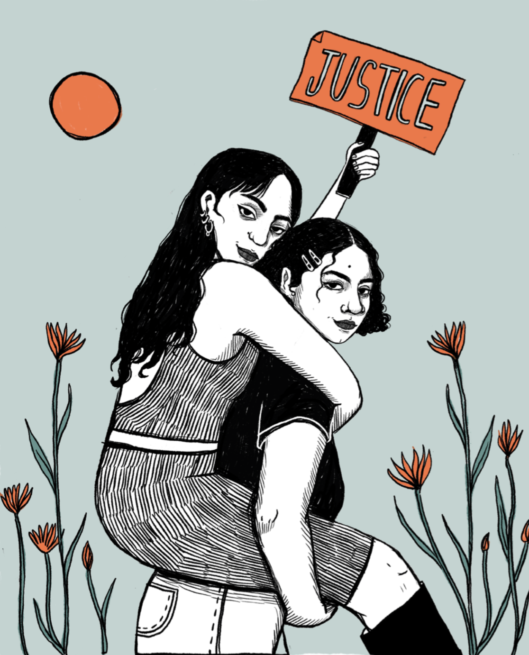
Join our mailing list
Sign up for shado's picks of the week! Dropping in your inbox every Friday, we share news from inside shado + out, plus job listings, event recommendations and actions ✊
Sign up for shado's picks of the week! Dropping in your inbox every Friday, we share news from inside shado + out, plus job listings, event recommendations and actions ✊
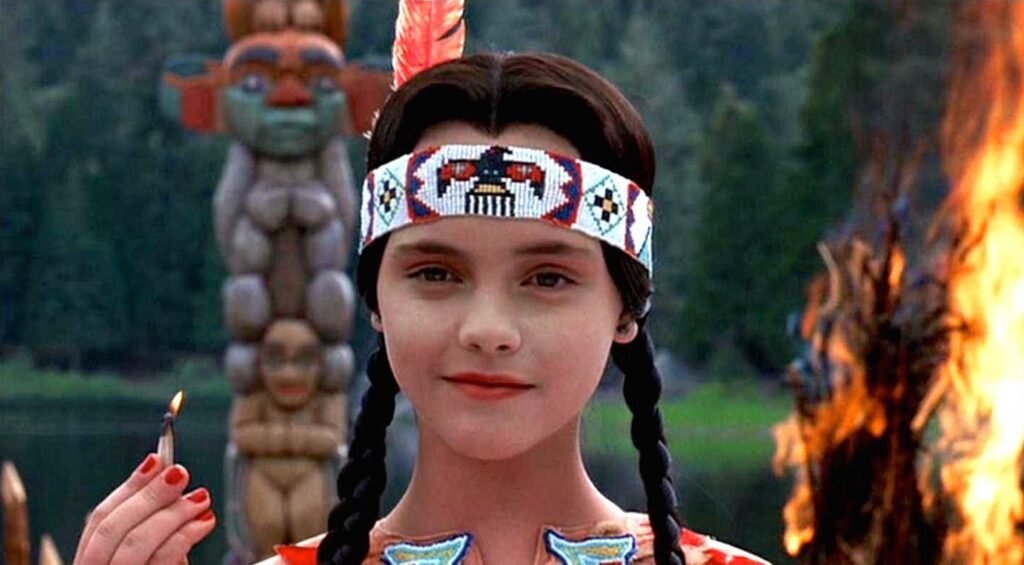
Though what follows is more racist depictions of Native Americans as hooting lunatics, Wednesday indeed burns the set to the ground and symbolically kills the pilgrims, making a poignant point about the distortion of American history and the need to restore the truth of it.
The lore of the Addams family makes a critique of the USA’s history of colonial genocide clear, as a consistent theme throughout most adaptations. Wednesday particularly is committed to her responsibility to resist not only the erasure of histories of genocide, but shows how this fight recurs as successions of white supremacists in every generation of the modern world persist in their attempts to wipe “outcasts” from the face of the earth.
Nearly 20 years later, Wednesday dropped on Netflix, centering a modern version of Wednesday and her discovery of her own history at Nevermore Academy – the school for social outcasts where her parents met.
The first season follows Wednesday as she learns to master her psychic ability and stop a killing spree attached to a mystery that dates back to her parents’ meeting 25 years prior. Where it leads is to Wednesday’s discovery of a plot to wipe out all outcasts as had been done centuries ago by the town’s colonist founder Joseph Crackstone. Within this discovery is also an ancestor, Goody Addams who killed Crackstone, now helping Wednesday to stop his descendants from doing it again.
Today, all of us protesting our persecution by numerous colonial establishments through refusal and rejection of whitewashed histories and presents, are perceived as insane and dangerous. The view of the Addams family as evil, dangerous, idiotic, ugly, sexually deviant, and cruel is a mirror for how public perception of societal Others fighting for social justice and an end to colonialism everywhere, is shaped.
Refusal and resistance is a demand of anti-normativity
Knowing the experience of persecution and rejection as a racialised, sexualised Other, it has become apparent to me how the insistence on the Addams family as cruel throughout some of the various storylines reveal more about those perceiving them. As they have continued to do, so should we never stop resisting the dishonesty of a world that tells us we are mad for wanting to exist as we are. More importantly, like Wednesday, we must never back down from resisting colonial distortions of history that legitimise and replicate genocides, while trying to convince us that it is not only natural, but divine.
These days, returning to The Addams Family brings a comforting familiarity that always manages to reveal something new in the scenes I can practically recite by heart. As I come to understand the world I live in more, each character offers me a new interpretation of the normative gaze that still dictates so much of our social relations.
Though I am partial to the characterisations executed by the actors of the ‘90s films, and admittedly I cannot accept anyone but Anjelica Huston as Morticia, the Netflix series has helped me unpick the subtleties of the anti-normativity the story communicates. Always timely, and refusing to be popular amongst normies, The Addams Family again reminds me that being liked at the expense of the truth is a kind of moral death. They encourage us to stand alone, if necessary, and reject acquiescence to the status quo which right now, as it has been before, is hellbent on erasing our differences.
What can you do?
Watch:
- The Addams Family Collection: (The Addams Family (1991), Addams Family Values (1993) and Wednesday (2022-2025) on Netflix
- Bury My Heart at Wounded Knee (Film)
Read:
- Suffer the Little Children: Genocide, Indigenous Nations and the Canadian State by Tamara Starblanke
- None of the Above: Reflections on Life beyond the Binary by Travis Alabanza
- Other shado articles by Jamil HERE

